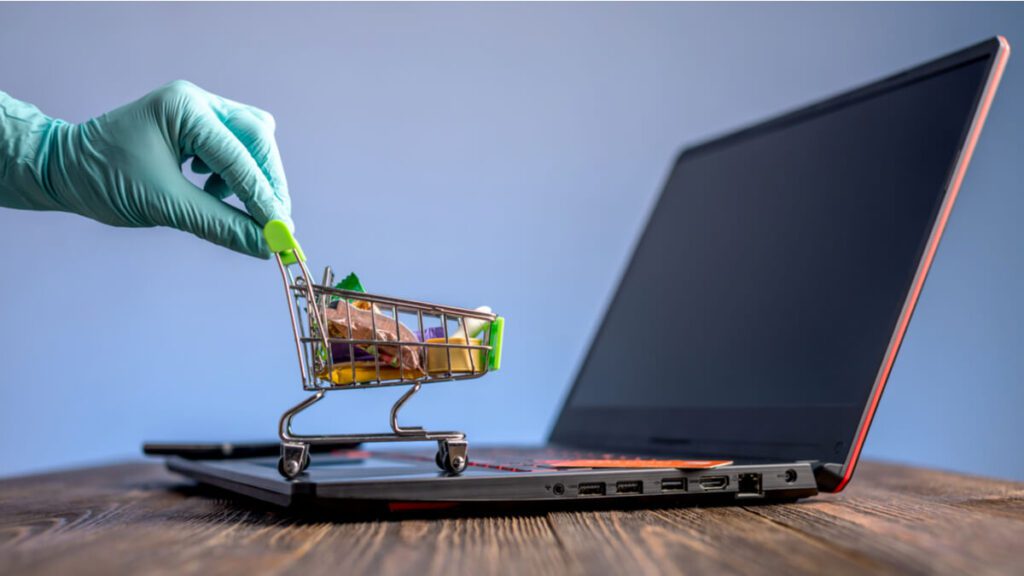Pandemic shopping survey shows much food, few outings

Six in ten Americans report that the COVID-19 pandemic year has permanently changed their spending and shopping habits, according to a new survey commissioned by shopping platform Slickdeals.
The survey of 2,000 general population Americans examined pandemic shopping, spending, and saving trends and revealed that 2020 has forever affected how 60 percent of shoppers budget and spend their money.
“We’ve found search volume on our site continues to remain high in the categories of home improvement and home office; and while there’s been a decline since the height of pandemic for searches related to essential items, terms like toilet paper continue to be popular with our users,” said Ryan Tronier, senior personal finance editor for Slickdeals.
The study found that over the course of the pandemic shopping year, consumers spent much less money on things like movies (49 percent), luxury goods (46 percent), video games (42 percent), clothes (42 percent) and entertainment (41 percent).
During the same period, Americans increased their spending on groceries (41 percent), self-care products (23 percent), bills (22 percent), takeout (22 percent) and healthcare (20 percent).
Early pandemic panic shopping
Nearly half (49 percent) said they were panic-buying essential goods at the beginning of the pandemic. At that time, the most panic-bought items included toilet paper (50 percent), cleaning supplies (42 percent), hand sanitizer (41 percent), water (41 percent) and paper towels (40 percent).
One year later, these habits have calmed down, but 14 percent of people nevertheless report continuing to panic-buy. People are still purchasing essential items like toilet paper (35 percent), water (31 percent), cleaning supplies (30 percent), hand sanitizer (29 percent) and paper towels (28 percent) more than they did prior to the start of the pandemic.
More than half (58 percent) of people said they reallocated their “going out” budget for staying in, with 41 percent of people spending more money on redecorating their home. Nearly three-quarters (73 percent) of these nesters feel more pride in their homes since they began investing more money and time into them.
However, not all spending changes were a choice or simple reallocation of budget. Two out of five Americans said they had a “significant” financial setback or loss in 2020. For 75 percent of them, their money problems made them reevaluate their long-term budgets.
In addition to budget cuts, 43 percent of people had to deal with unexpected expenses within the past year, including new bills (31 percent), new savings costs (22 percent), clothes (22 percent) and groceries (19 percent). Also frequently mentioned were funerals, medicine and health expenses.
More than two-thirds (67 percent) of respondents said when they received a stimulus check within the past year. For most, their stimulus money was spent on the necessities — bills (58 percent), groceries (34 percent) and savings (29 percent).
American spending habits also point towards hunting for the perfect deal. Over half (54 percent) would be willing to spend more than their budget would allow if the item they want is on sale. Nearly as many (52 percent) are willing to buy things in bulk if they are on sale, according to the survey.
All the same, eight in ten Americans are more likely to buy essential items on sale than non-essential items and luxuries, the poll noted.
When the paycheck comes in, most Americans will first tackle their bills. After that, however, a majority will also go shopping for groceries, along with a third spending money on clothes and 21 percent on medications.
Pets are still a must amid the pandemic, with 21 percent of those surveyed spending on their four-legged friends.
